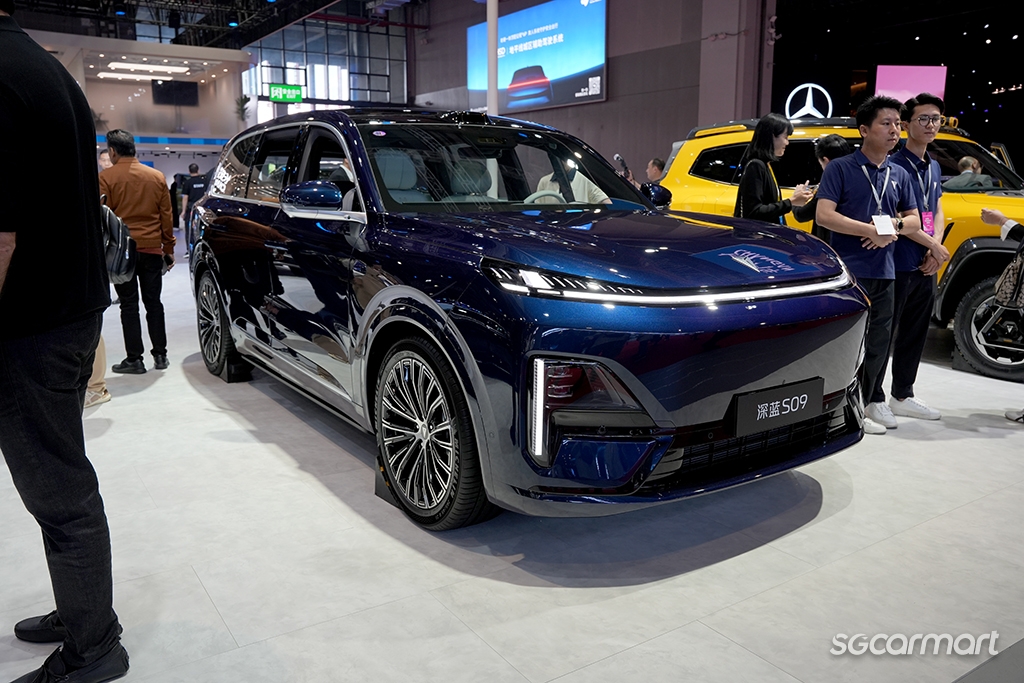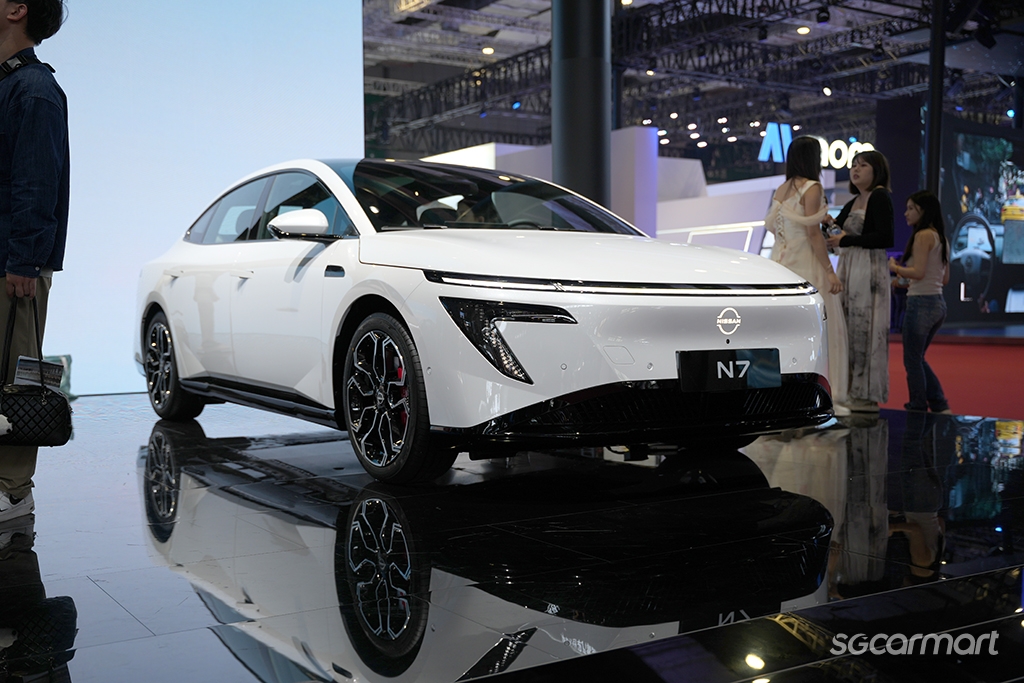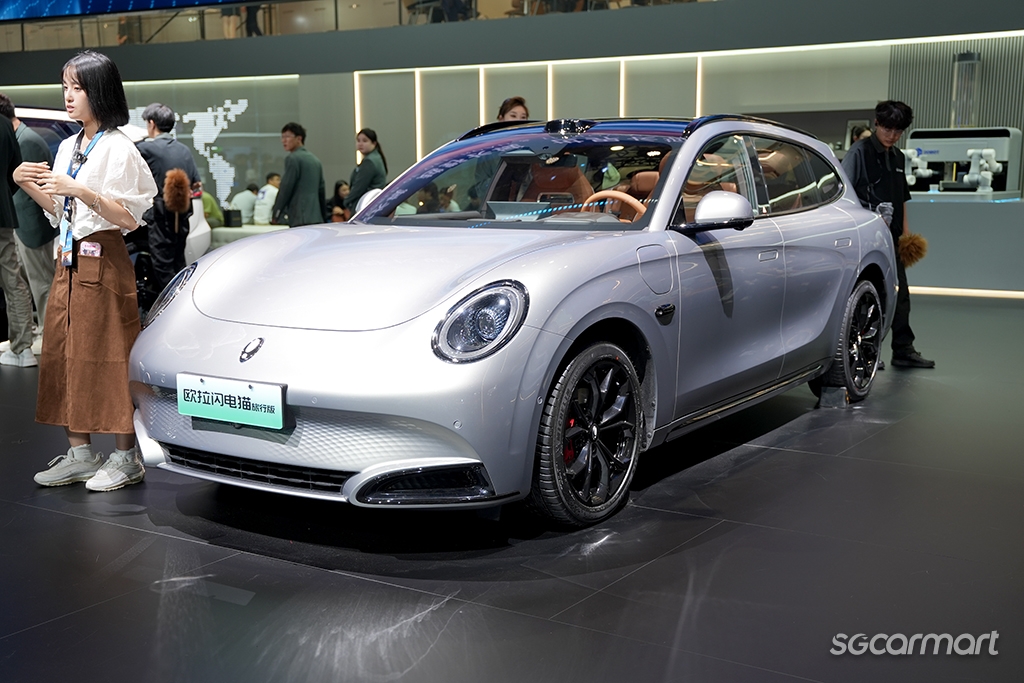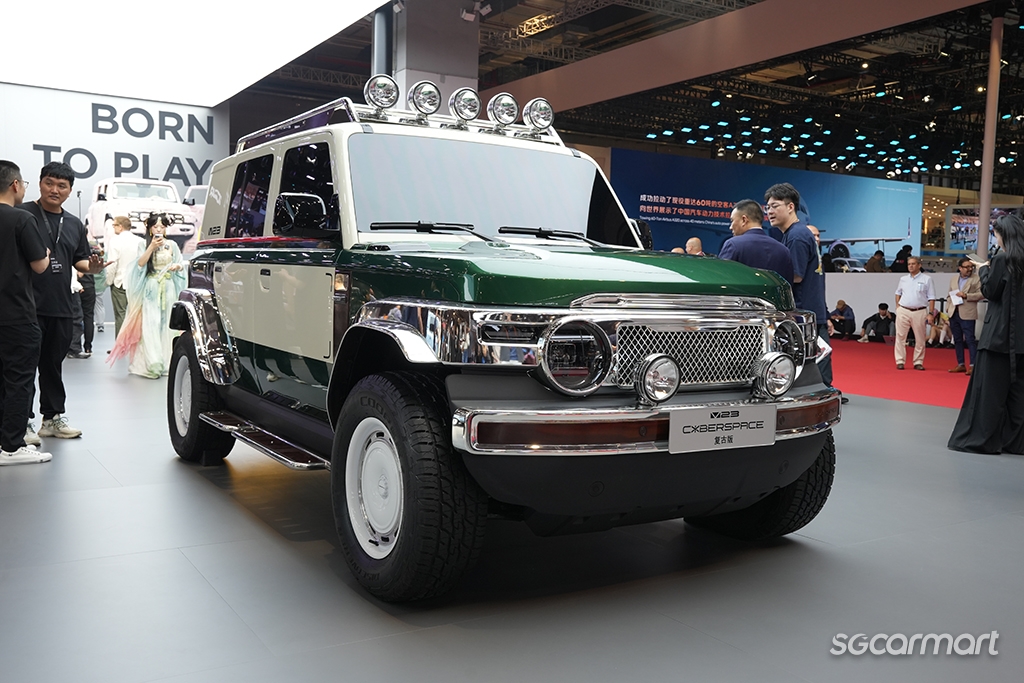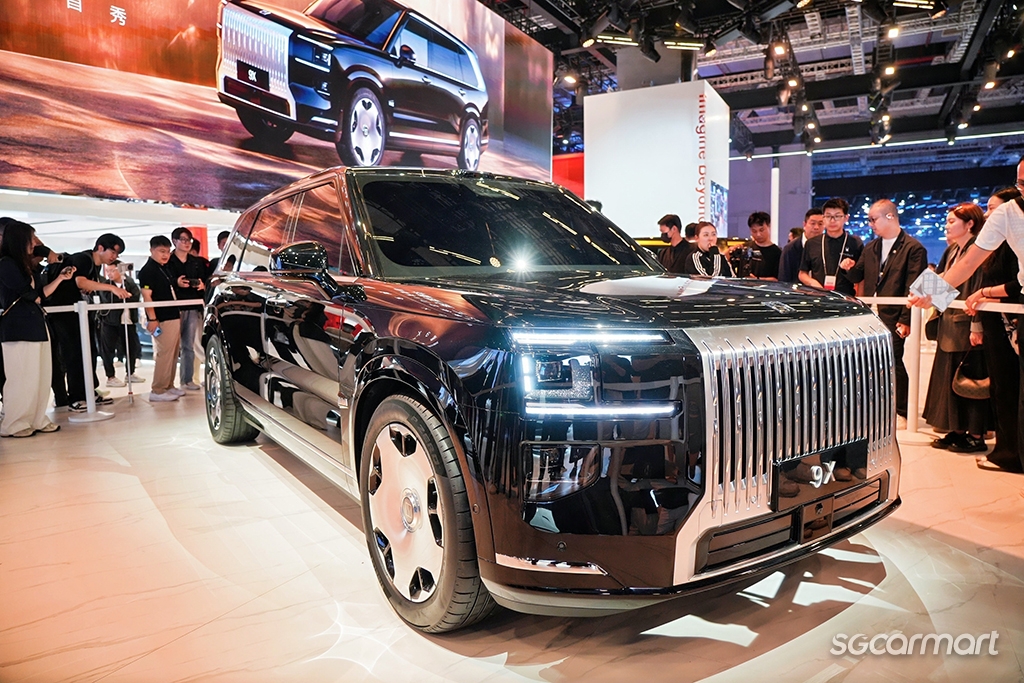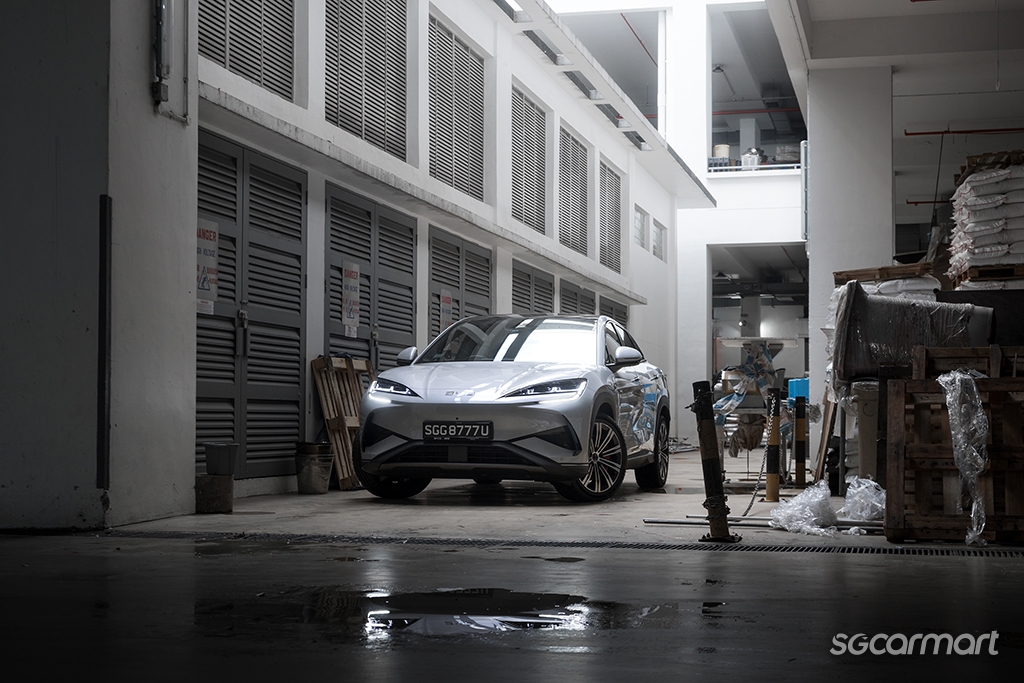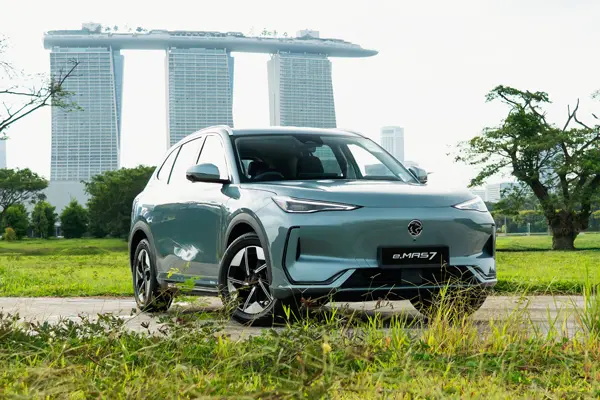Do all Chinese cars look the same? Or is it just me...?
01 May 2025|4,122 views
Yes. Electric vehicles (EVs) and Chinese carmakers. They go hand in hand. There may be EVs from Audi, BMW, Hyundai, Kia, Lexus, Mercedes-Benz, MINI... but when we hear the two words "electric vehicles" or the acronym "EVs", we immediately resonate them with Chinese carmakers. It's inevitable.
So in order to find out more for myself, I decided to head down to Shanghai, China, to see things clearly... again. This time around, I went there without any carmakers' invitation, just so I can stay as neutral and transparent as possible.
A cheapskate like you spending money?!?
For that very reason, I spent three days at the Shanghai Motor Show, one that's about 360,000sqm big, which is more than twice the size of the already huge Vivocity. First two were for the media and the last day for me was the start for the public.
Eight hours a day, 20,000 steps recorded and countless times chit chatting in my jungle Mandarin with people there made me realise several things: 1. Chinese carmakers are extremely keen to expand overseas due to the stiff competition they are facing in China, 2. Most of their cars look the same and 3. The model names are mostly in numerical forms.
Squinty head and taillights stretching the width of the body, either a rectangular screen on the centre of the dashboard with nothing else around or a full-width screen that can make you write a thousand-word story about it, and they are only in SUVs or sedans. A handful of hatchbacks, and no wagons (barring the Ora 07 Wagon, which is cool, by the way).
There's a reason for that, dude
Sure, SUVs and sedans are arguably the more popular bodytypes in this part of the world, but aren't the Chinese tired of copying? I look at Audi and I look at BMW and I look at Volkswagen... I see different cars with different designs and different styles. When I look at a handful of Chinese cars, listening to a mouthful of words I can hardly comprehend, I start becoming mindful...
Don't get me wrong. That's not to say these Chinese carmakers are lacking creativity or they are boring. Some are admittedly mighty impressive. Just look at the Xiaomi SU7 and the Zeekr 9X, or perhaps the Hong Qi limousine and the Chery iCar V23.
The Chinese carmakers are obviously more than capable of creating hype, shaking designs, and shouting their marketing messages across to consumers effectively. So why do they all look the same?
While I may be lamenting, cars like the Chery iCar V23 (left) and the new Zeekr 9X are arguably cool and appealing
The obvious answers are borrowing inspiration, which is common. More relevantly is affordability and having the ability to mass produce. Of course, many will argue that culture influences the designs of these cars as well, as this can lead to uniformity in design across the different brands.
Unfortunately, these answers are genuinely making it hard for foreigners like us to differentiate the brands. Having multiple brands under one umbrella name is one thing, but having nearly identical designs can easily throw one off their game. And to make matters worse, these car models from different car brands have similar numerical monikers! From 001 and 009 to 01 and 09 - you name it, they probably have it.
In that sense, BYD has cleverly and strategically differentiated themselves from the pack with proper names like Seal and Sealion in Singapore.
If you can't win them, join them
I suppose time will tell. After spending a week here in Shanghai speaking with the locals, observing the businesses and nursing a bad flu, I realised the Chinese people are a smart and humble bunch that should not be trifled with. They know what they're doing and they know whom they're dealing with.
It's a chess game of sorts. The balance between offence and defence can be seen, heard and experienced. Some will succeed, some will not, and there will be no harm and no foul. One thing I've learnt is that when it comes to work, it's all business, nothing personal - and the Chinese definitely knows that.
Yes. Electric vehicles (EVs) and Chinese carmakers. They go hand in hand. There may be EVs from Audi, BMW, Hyundai, Kia, Lexus, Mercedes-Benz, MINI... but when we hear the two words "electric vehicles" or the acronym "EVs", we immediately resonate them with Chinese carmakers. It's inevitable.
So in order to find out more for myself, I decided to head down to Shanghai, China, to see things clearly... again. This time around, I went there without any carmakers' invitation, just so I can stay as neutral and transparent as possible.
A cheapskate like you spending money?!?
For that very reason, I spent three days at the Shanghai Motor Show, one that's about 360,000sqm big, which is more than twice the size of the already huge Vivocity. First two were for the media and the last day for me was the start for the public.
Eight hours a day, 20,000 steps recorded and countless times chit chatting in my jungle Mandarin with people there made me realise several things: 1. Chinese carmakers are extremely keen to expand overseas due to the stiff competition they are facing in China, 2. Most of their cars look the same and 3. The model names are mostly in numerical forms.
Squinty head and taillights stretching the width of the body, either a rectangular screen on the centre of the dashboard with nothing else around or a full-width screen that can make you write a thousand-word story about it, and they are only in SUVs or sedans. A handful of hatchbacks, and no wagons (barring the Ora 07 Wagon, which is cool, by the way).
There's a reason for that, dude
Sure, SUVs and sedans are arguably the more popular bodytypes in this part of the world, but aren't the Chinese tired of copying? I look at Audi and I look at BMW and I look at Volkswagen... I see different cars with different designs and different styles. When I look at a handful of Chinese cars, listening to a mouthful of words I can hardly comprehend, I start becoming mindful...
Don't get me wrong. That's not to say these Chinese carmakers are lacking creativity or they are boring. Some are admittedly mighty impressive. Just look at the Xiaomi SU7 and the Zeekr 9X, or perhaps the Hong Qi limousine and the Chery iCar V23.
The Chinese carmakers are obviously more than capable of creating hype, shaking designs, and shouting their marketing messages across to consumers effectively. So why do they all look the same?
While I may be lamenting, cars like the Chery iCar V23 (left) and the new Zeekr 9X are arguably cool and appealing
The obvious answers are borrowing inspiration, which is common. More relevantly is affordability and having the ability to mass produce. Of course, many will argue that culture influences the designs of these cars as well, as this can lead to uniformity in design across the different brands.
Unfortunately, these answers are genuinely making it hard for foreigners like us to differentiate the brands. Having multiple brands under one umbrella name is one thing, but having nearly identical designs can easily throw one off their game. And to make matters worse, these car models from different car brands have similar numerical monikers! From 001 and 009 to 01 and 09 - you name it, they probably have it.
In that sense, BYD has cleverly and strategically differentiated themselves from the pack with proper names like Seal and Sealion in Singapore.
If you can't win them, join them
I suppose time will tell. After spending a week here in Shanghai speaking with the locals, observing the businesses and nursing a bad flu, I realised the Chinese people are a smart and humble bunch that should not be trifled with. They know what they're doing and they know whom they're dealing with.
It's a chess game of sorts. The balance between offence and defence can be seen, heard and experienced. Some will succeed, some will not, and there will be no harm and no foul. One thing I've learnt is that when it comes to work, it's all business, nothing personal - and the Chinese definitely knows that.
Thank You For Your Subscription.













